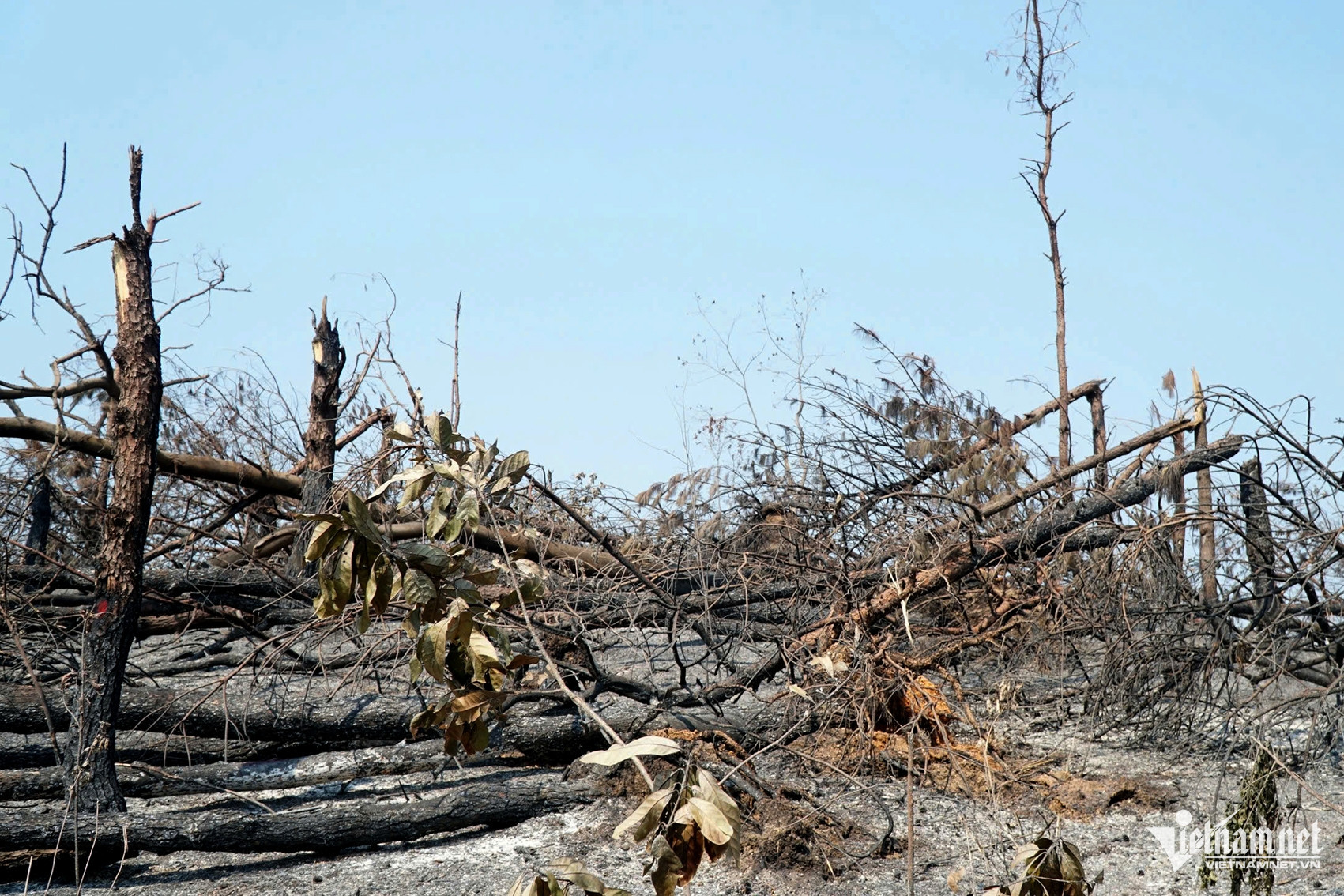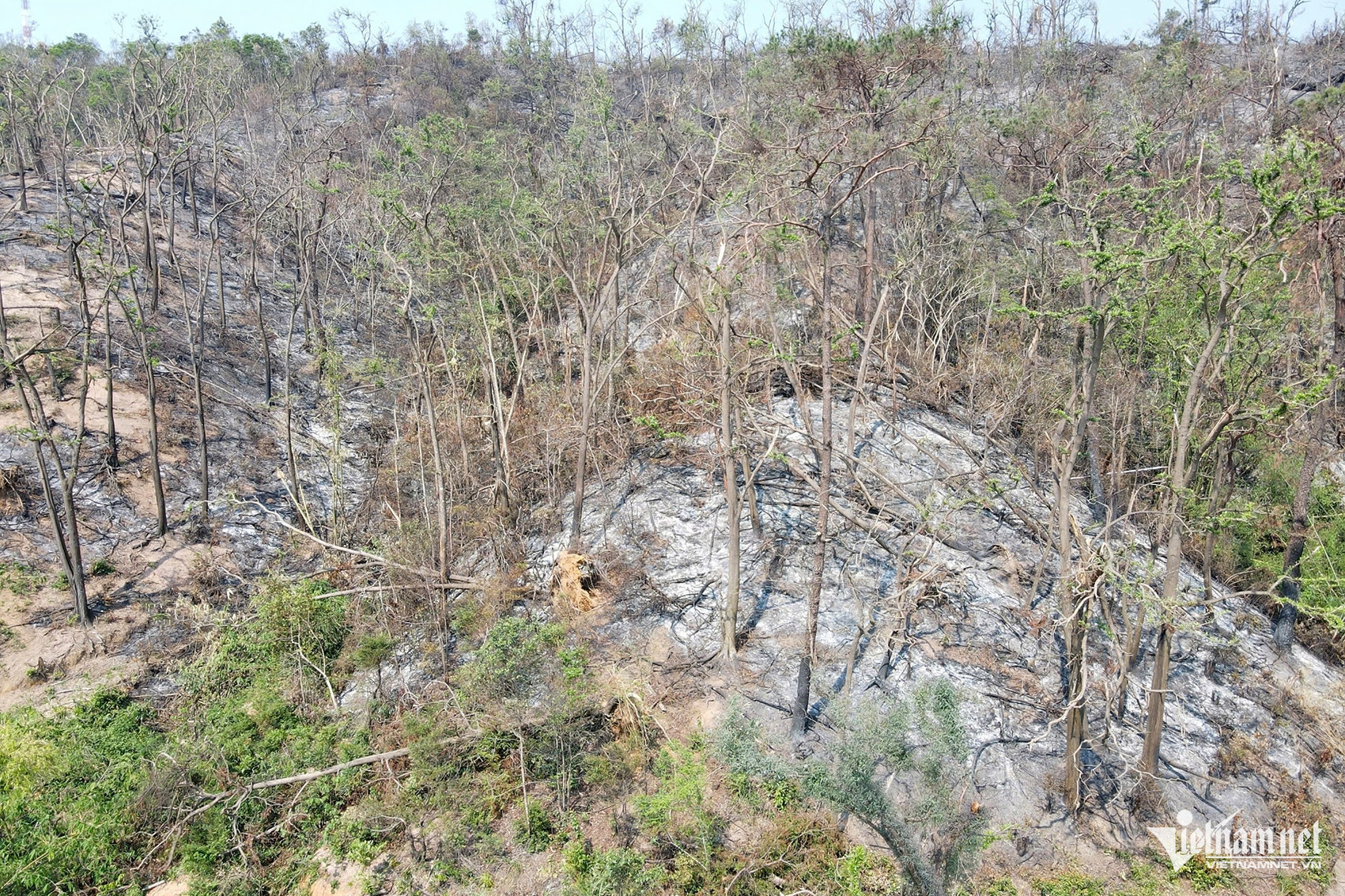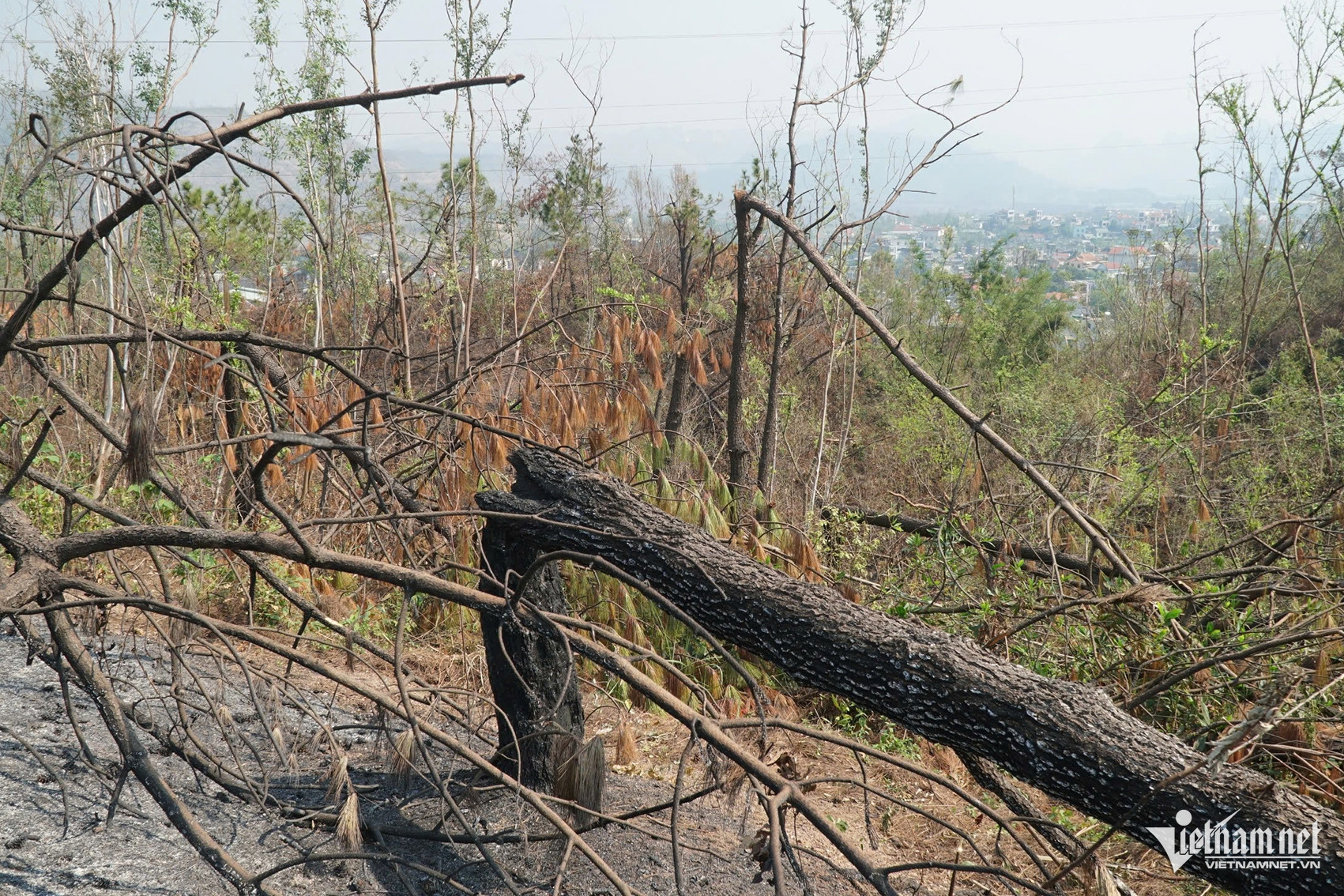As of October 13, many forests in Quang Ninh still lie in ruins, with fallen and broken trees, as if the storm had just passed.
In the heart of Ha Long City, all the hills, once known as the city's "green lungs," have suffered extensive damage. Tall trees such as pines, eucalyptus, and acacias were either uprooted or snapped in half. The remaining trees were stripped of their leaves and broken by the storm’s force.
The once-green hills have turned brown, with the forest floor now covered in dead vegetation, posing a high risk of wildfires.


On October 4, a forest fire broke out on a pine hill in Hong Ha Ward, Ha Long City, spreading to Ha Trung Ward. It took authorities a full day to extinguish the fire.
The fire spread rapidly due to the abundance of dead trees. Fallen trees blocked access routes, making it difficult for firefighting teams to reach the scene.
Since Typhoon Yagi hit, Quang Ninh has experienced nine forest fires in areas such as Van Don, Cam Pha, Ba Che, Mong Cai, and Ha Long, burning more than 57 hectares of forest.


Speaking with VietNamNet, Vu Duy Van, Deputy Director of the Department of Agriculture and Rural Development of Quang Ninh, said that large areas of forest in the province have been severely damaged by the storm. The department has implemented various solutions to aid in forest recovery efforts.
Provincial leaders have also met with forestry companies to plan the reconstruction and provide support to affected residents. The province has launched a major campaign to buy wood from storm-damaged forests.
Nguyen Thanh Khuong, Deputy Director of the Quang Ninh Forest Protection Department, reported that the fallen trees from Typhoon Yagi have created about 6 million tons of highly flammable material.
This is the first time the province’s forestry sector has faced such significant damage from a natural disaster. More than 30% of the province's forests have been affected, with nearly 50% of planted forests being destroyed.


Khuong noted that accessing the damaged areas has been challenging due to difficult terrain and limited forestry infrastructure. Nearly 50% of the planted forests from 2021-2023 were destroyed, and the value of recovered timber is insufficient to cover the cleanup costs. Additionally, it has been difficult to hire workers for forest cleanup due to high labor costs and low timber prices.
"Many forest areas near residential, industrial, and service zones are being illegally harvested by locals, increasing the risk of state asset loss and further wildfires," Khuong warned.
According to reports, more than 117,000 hectares of forest in Quang Ninh were damaged by Storm No. 3, resulting in losses exceeding 6.4 trillion VND. Damage levels range from 30-100%. Most of the damaged forest areas were planted forests with species such as pines, acacias, and eucalyptus. In addition, thousands of hectares of natural forest were also affected.
Pham Cong